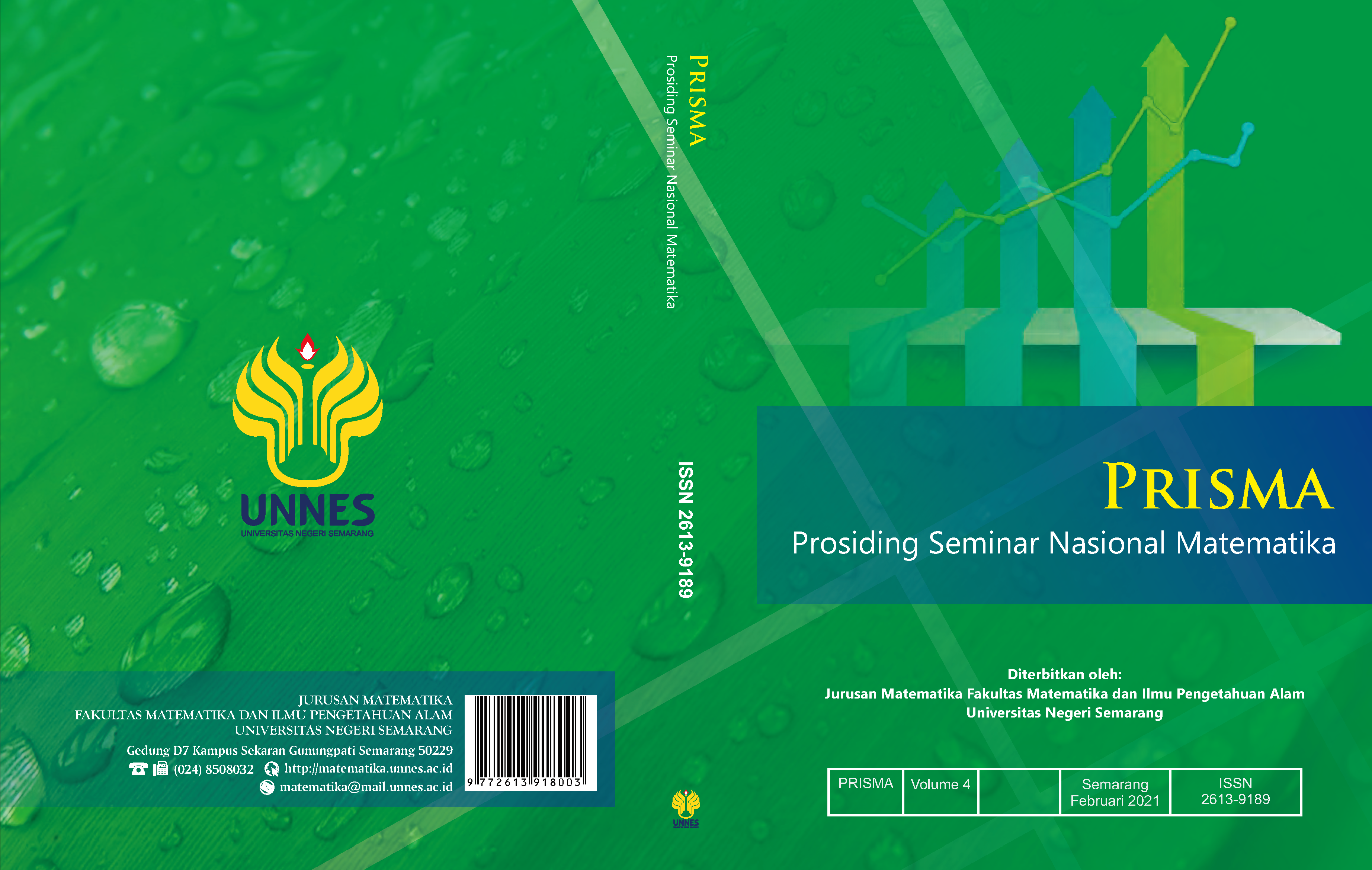Model Dinamika Interaksi Virus Corona (SARS-CoV-2) Penyebab COVID-19 dengan Sistem Imun Tubuh
Main Article Content
Abstract
Pemodelan merupakan representasi sistem fisik ke dalam bentuk matematis. Sehingga permasalahan tersebut dapat dicari solusinya. Pemanfaatan model dan metode numerik salah satunya, yaitu di bidang biologi. Pemodelan dalam biologi yang paling sering digunakan yaitu pemodelan untuk penyakit menular, seperti penyakit yang disebabkan oleh virus. Akhir-akhir ini dunia digemparkan dengan wabah COVID-19 yang disebabkan oleh virus corona jenis SARS-CoV-2. Virus tersebut menyerang sistem pernafasan manusia sehingga menimbulkan permasalahan pada paru-paru yang mengakibatkan sesak nafas. Permasalahan interaksi antara virus corona dengan sistem imun tubuh yang kompleks dapat dimodelkan dalam persamaan diferensial. Artikel ini merupakan artikel kajian teori berdasarkan literatur medis dan pemodelan matematika. Pada artikel ini akan diuraikan penelitian terkait interaksi virus corona (SARS-CoV-2) dengan sistem imun tubuh pernah diteliti.
Article Details
References
Azizah, K. 2020. Ketahui Cara Virus Corona Membajak Sel Tubuh Manusia. (Online). (https://www.merdeka.com/trending/ketahui-cara-virus-corona-membajak-sel-tubuh-manusia-kln.html, diakses 1 Oktober 2020).
Fatmah. (2006). Respons Imunitas yang Rendah Pada Tubuh Manusia Usia Lanjut. Makara Kesehatan, 10(1), 47–53.
Fiorillo, L., Cervino, G., Matarese, M., Amico, C. D., Surace, G., Paduano, V., Fiorillo, M. T., Moschella, A., Bruna, A. La, Romano, G. L., Laudicella, R., Baldari, S., & Cicci, M. (2020). COVID-19 Surface Persistence : A Recent Data Summary and Its Importance for Medical and Dental Settings. International Journal of Environmental Research and Public Health, 17, 1-10.
Hattaf, K., & Yousfi, N. (2020). Dynamics of SARS-CoV-2 Infection Model with Two Modes of Transmission and Immune Response. Mathematical Biosciences and Engineering, 17(5), 5326-5340.
Huang, C., Wang, Y., Li, X., Ren, L., Zhao, J., Hu, Y., Zhang, L., Fan, G., Xu, J., & Gu, X. (2020). Clinical Features of Patients Infected with 2019 Novel Coronavirus in Wuhan , China. 395, 497–506.
Kharis, M., & Asih, T. S. N. (2018). Pengantar Pemodelan Matematika. Semarang: FMIPA UNNES.
Kermack, W. O., & McKendrick, A. G. (1927). A Contribution to the Mathematical Theory of Epidemics. In Preceeding of the Royal Society of Lomdon. Series A, Containing Paper of a Mathematical and Physical Character (Vol. 115, pp 700-721). Edinburgh, Skotlandia.
Munir, R. 2010. Metode Numerik Revisi Ketiga. Bandung: Informatika.
Putra, R. T., & Susanto, A. (2011). Model Dinamika Infeksi Virus dalam Tubuh Tanpa Respon Imun. Poli Rekayasa, 7(1), 31-38.
Quan, S., & Weiming, D. (2020). Mathematical Modeling of Interaction Between Innate and Adaptive Immune Responses In COVID †19 and Implications for Viral Pathogenesis. Journal of Medical Virologi, 1–14.
Rabi, F. A., Zoubi, M. S. Al, Kasasbeh, G. A., Salameh, D. M., & Al-Nasser, A. D. (2020). SARS-CoV-2 and Coronavirus Disease 2019 : What We Know So Far. Pathogens, 9(231), 1–14.
Susilo, A., Rumende, C. M., Pitoyo, C. W., Santoso, W. D., Yulianti, M., Herikurniawan, Sinto, R., Singh, G., Nainggolan, L., Nelwan, E. J., Chen, L. K., Widhani, A., Wijaya, E., Wicaksana, B., Maksum, M., Annisa, F., Jasirwan, O. M., & Yunihastuti, E. (2020). Coronavirus Disease 2019 : Tinjauan Literatur Terkini. Jurnal Penyakit Dalam Indonesia, 7(1), 45–67.
Xie, M., & Chen, Q. (2020). Insight Into 2019 Novel Coronavirus-An Updated Interim Review and Lessons from SARS-CoV and MERS-CoV. International Journal of Infectious Diseases, 94, 119–124.
